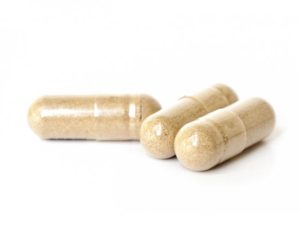 Americans are eating so much ultra-processed food that it's now more than 50% of their daily calories. And why shouldn't they eat these foods? They're easy to get (fast foods, prepackaged foods, take out foods), they taste good, and they're great for people pressed for time. That's why they're called "convenience foods" and include fast foods, prepackaged foods, many frozen meals, take out foods, soda, packaged snacks, and many cakes, candies, and cookies.
Americans are eating so much ultra-processed food that it's now more than 50% of their daily calories. And why shouldn't they eat these foods? They're easy to get (fast foods, prepackaged foods, take out foods), they taste good, and they're great for people pressed for time. That's why they're called "convenience foods" and include fast foods, prepackaged foods, many frozen meals, take out foods, soda, packaged snacks, and many cakes, candies, and cookies.
But... there's a dark side to highly processed food. It is linked to all sorts of harmful health effects (cancer, Alzheimer's disease, etc), to chronic inflammation, and now to worse heart health. Even our beneficial gut microbes don't like highly processed foods. Instead, they like real whole foods, especially plant based foods high in fiber, such as whole grains, fruits, vegetables, nuts, seeds, legumes.
There are all sorts of ingredients in ultra-processed foods that are laboratory concoctions, from artificial and natural flavors, colors, additives, preservatives, etc. Read the ingredient lists!
The results of a new study by researchers at the CDC (Centers for Disease Control and Prevention) found that for every 5% increase in calories from ultra-processed foods a person ate, there was a corresponding decrease in overall cardiovascular (heart) health.
From Science Daily: Too much ultra-processed food linked to lower heart health ...continue reading "Highly Processed Foods and Heart Health"

 The last few years has seen a loosening of all sorts environmental rules here in the United States, including air pollution. The EPA (Environmental Protection Agency) is not looking out for ordinary people, but doing its best to be as accommodating as possible to big industry. Pollution standards and rules are going backwards! A lot.
The last few years has seen a loosening of all sorts environmental rules here in the United States, including air pollution. The EPA (Environmental Protection Agency) is not looking out for ordinary people, but doing its best to be as accommodating as possible to big industry. Pollution standards and rules are going backwards! A lot. Generations of people were raised thinking that when a person sleeps, that the brain is also resting. Well.... that was then, but the new view is that when we are sleeping, a number of important things are occurring. A main activity during sleep is that the brain is flushing out the garbage, that is, waste products or toxins. [Some other stuff going on includes cell repair, building of bone and muscle, memory consolidation, and strengthening of the immune system.]
Generations of people were raised thinking that when a person sleeps, that the brain is also resting. Well.... that was then, but the new view is that when we are sleeping, a number of important things are occurring. A main activity during sleep is that the brain is flushing out the garbage, that is, waste products or toxins. [Some other stuff going on includes cell repair, building of bone and muscle, memory consolidation, and strengthening of the immune system.]
 The results of a
The results of a  Researchers in Canada found that sunlight (or UVB light) on the skin changes the gut microbes (gut microbiome), especially in people with lower levels of vitamin D, that is, who are vitamin D deficient. UVB (Ultraviolet B light) exposure increased beneficial gut microbe diversity and richness in these people, as well as increasing their vitamin D levels. However, people who had been taking vitamin D supplements prior to the study, and who had sufficient vitamin D levels, did not have significant gut microbiome changes.
Researchers in Canada found that sunlight (or UVB light) on the skin changes the gut microbes (gut microbiome), especially in people with lower levels of vitamin D, that is, who are vitamin D deficient. UVB (Ultraviolet B light) exposure increased beneficial gut microbe diversity and richness in these people, as well as increasing their vitamin D levels. However, people who had been taking vitamin D supplements prior to the study, and who had sufficient vitamin D levels, did not have significant gut microbiome changes. Researchers are starting to raise concerns about routine daily intake of probiotics for "gut health". Much is still unknown, but problems are starting to appear. A healthy gut contains hundreds of species (bacteria, fungi, viruses), and taking megadoses of a few species (a probiotic supplement) can overwhelm the normal gut microbial community. A healthy gut is one with a greater diversity of species, not just some species.
Researchers are starting to raise concerns about routine daily intake of probiotics for "gut health". Much is still unknown, but problems are starting to appear. A healthy gut contains hundreds of species (bacteria, fungi, viruses), and taking megadoses of a few species (a probiotic supplement) can overwhelm the normal gut microbial community. A healthy gut is one with a greater diversity of species, not just some species. The evidence is building, study by study, that we are all exposed to a mixture of hormone disrupting chemicals (endocrine disruptors) on a daily basis, and that these have serious health effects, including on the developing fetus during pregnancy.
The evidence is building, study by study, that we are all exposed to a mixture of hormone disrupting chemicals (endocrine disruptors) on a daily basis, and that these have serious health effects, including on the developing fetus during pregnancy.  Food is all important for health. A
Food is all important for health. A  Reading the following study, I thought to myself - OK, once again someone is testing a supplement, but generally studies find that supplements don't do as well as real, actual foods in whatever is being tested. In this case, a supplement containing lycopene, which is found in tomatoes,
Reading the following study, I thought to myself - OK, once again someone is testing a supplement, but generally studies find that supplements don't do as well as real, actual foods in whatever is being tested. In this case, a supplement containing lycopene, which is found in tomatoes,